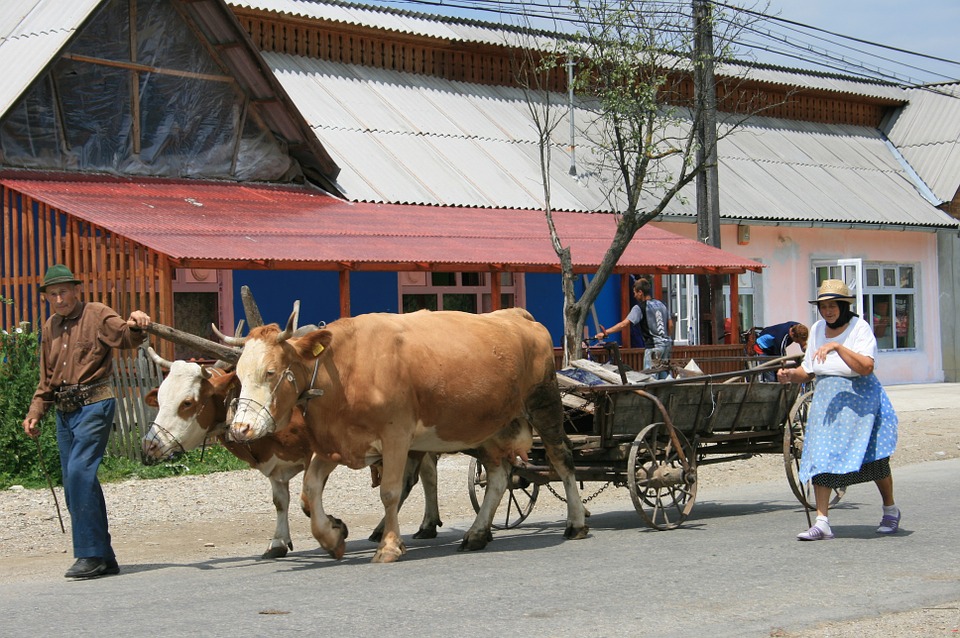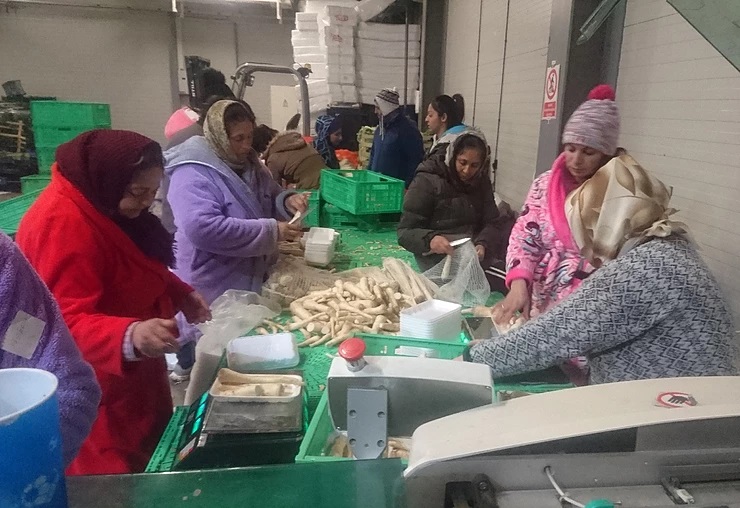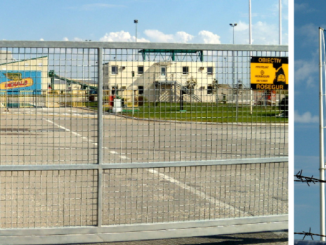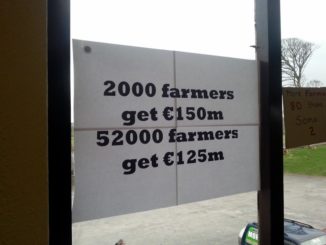
Supposed digital and technological solutions abound in agriculture, and are strongly emphasised in the EU Commission’s CAP proposals. What are the consequences of the increasing focus on these solutions – and can they really work for rural Romania? Are there other more appropriate approaches?
The disruptive power of technology
by Irina Toma, with contributions from Tiberiu Cazacioc and Mark Redman
The disruptive potential of upcoming digital technologies and automation is on everybody’s lips. We are being told that 37% of the EU population does not have basic digitization skills and is therefore in need of re-educating itself – not only in IT but also in automation (1). A 2017 Report by McKinsey Global Institute notes that 30% of tasks in 60% of the occupations could be automated by 2030 (2). Even in agriculture, the world’s oldest sector, digital consumer-to-farm platforms, remote sensing, blockchain and IoT sensors have started to revolutionize the food system across Europe (3).
A clear 2030 digital agenda is now emerging whereby the European Commission and major farming organisations are convinced that a long-term policy perspective focused on digitization will attract more investment and more young people into agriculture, whilst contributing significantly to the resilience and sustainability of the sector (4).
Digitization in Romania – What could this mean for agriculture?
In a Romanian context, technology serves as both a threat and an opportunity. Considering the fact that Romania’s agricultural system brings only 4.5% of the GDP, compared to 25% for the IT industry, there seems to be tremendous opportunity for growth. But the associated issues are complex. On the one hand, the predominantly small-farm structure of the country, fragmented land ownership and low levels of mechanization are palpable barriers to rapid system shift. On the other hand, every single farmer the Highclere research team has interviewed in 2018 mentioned the increasing lack of available labor as THE main obstacle they face for staying in business, one challenge where digitization and automation are obvious solutions.
However, they are not universal solutions. The rural workforce may be declining, but opportunities for paid work are fundamentally important for many rural households and automation replaces the kind of repetitive tasks which ARE generating valuable – albeit small – rural incomes.
What would be the fate of these women, above, happily employed at the packaging line of a cooperative Highclere works with, if their jobs will be automated? The cooperative is the main employer in the village. The women are happy they are able to invest in their additional income in the education of their children. Will these women accept to be retrained into technologically-capable workers? Or will they revert to living off subsistence agriculture and social benefits once their jobs are being taken over by automation?
While during the 2018 Disruptive Innovation Festival, Neeraj Monga spoke about using blockchain technologies in India for the potential benefit of small farmers (5), the only actors in Romania who have announced piloting the blockchain system are Carrefour Romania via their global program Act for Food (6). Many agricultural holdings in Romania are just learning about how to meet market and fiscal requirements in order to run a profitable and legal-compliant business. Several farmers we’ve spoken to in Transylvania have to save up their profits for years in order to be able to afford buying rather basic second-hand mechanical hay-making equipment.
Will further digitization in Romanian agriculture not completely lock out hundreds of thousands of smaller producers from competing in already tough markets?
The I4T Conference organized by Iceberg Consulting in November 2018 in Brasov, Romania, was a good opportunity to contextualize these future scenarios. Focused on discussing what’s needed ahead of the EU’s post 2020 digitization agenda, Mr Ioan Levitchi’s (Agency for Development of the Central Region) presentation was particularly sobering. According to Mr Levitchi, Romania is apparently among the countries with the highest risks to globalization due to the high level of youth who are Not in Education, Employment or training (NEET) in the country. According to him, over 80% of the labor force registered at Brasov’s unemployment office has only completed basic compulsory education. How could a country with such fundamental educational issues hope to catch up and adapt to the potential disruptions and societal challenges brought by digitization?
Three solutions
Over two-thirds of Romanian farmers are above 64 years old (7) and in the coming years we are therefore likely to see further consolidation of agricultural holdings. Furthermore, sensing the lack of opportunity in agriculture, many countryside inhabitants are likely to continue to leave the sector and look for opportunity elsewhere. Will their jobs be taken over by automation? And with what cost to biodiversity and landscape preservation? Will those who choose to stay only be big farmers who can afford to buy expensive technologies? What systems would we need in place in order to make the transition to a more technological agricultural system available for everyone?
1: Cross cutting.
First of all, the measures needed require a comprehensive approach across policy domains, involving cross-cutting cooperation between agricultural, technological and educational sectors.
2: Learn from the right places.
Secondly, in order to balance out EU digitization policy with the needs of all its member countries, without causing more inequality, conflict and social instability, EU programs should focus on transferring more from the experience of countries which are also dealing with the same situation, such as India (8) and several African countries (9).Particularly interesting are those countries which are both developing and publicly funding user-friendly apps for smallholder farmers, thereby offering access to up-to-date market prices, agro-weather forecasting, information on subsidy payments etc
The increased use of these apps is of course linked to the explosion of smart phone ownership. But these apps are more than just a fad. They can also play an educative role and offer the potential to connect with Farm Advisory Systems in order to support specialized technological education for farmers. Agricultural high schools and agronomic universities could also modernize their curricula to include digitization-focused classes and demonstration activities of such technologies, in order to raise awareness among the new generation about future scenarios.
3: Affordable and small farmer-led.
Thirdly, the great majority of farmers we spoke to this last summer as part of our AGRILINK project said that agricultural fairs in Romania are presenting new technologies which are not affordable for their incomes. Considering that new tractors cost up to 60.000 euros, as much as buying an apartment in one of Romania’s larger cities, it is no surprise that many small farmers feel locked out of the productivity and innovation trend. European innovation supporting programs should also focus on developing, promoting and up-scaling lower-cost technologies for small-farmers, ones more suited for the „bottom of the pyramid” as well. The Atelier Paysant in France has taken matters into its own hands by developing training programs for small-farmers to be able to innovate on their own machinery (10). Could other agricultural research projects learn from this?
AgtechTakeback – Technical Sovereignty and L’Atelier Paysan’s Tooled up French Farmers
These are just a few ideas to which could help assure that digitization of agriculture in Romania, but also in other countries with high numbers of small farmers, is done with consideration for balancing inequalities and power imbalances in our food system. To prevent further social instability in Europe, all current innovation agendas should make sure that they enable an inclusive future for all by 2030.
https://www.highclere-consulting.com/highclere-consulting-blog
References
(1) [http://ec.europa.eu/newsroom/document.cfm?doc_id=44515]
(2) [https://www.theguardian.com/us-news/2017/jun/26/jobs-future-automation-robots-skills-creative-health]
(5) [https://www.thinkdif.co/sessions/blockchain-in-organic-food]
(6) [https://actforfood.carrefour.ro/De-ce-sa-actionam/BLOCKCHAIN]
(7) [http://ec.europa.eu/agriculture/cap-indicators/context/2017/c23_en.pdf]
(8) [https://blogs.worldbank.org/voices/planet-apps-making-small-farms-competitive]





